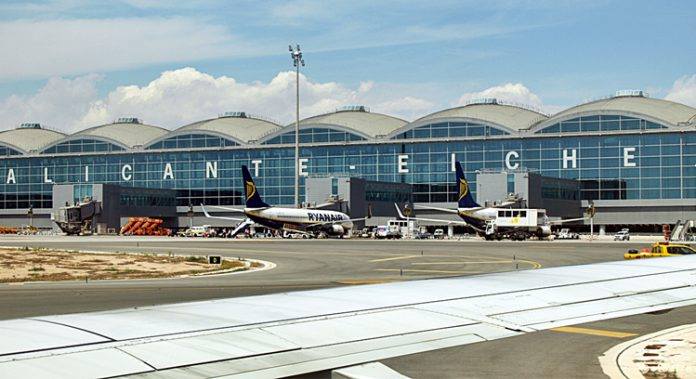Image Credit: Getty Image
The Alaska earthquake tsunami warning is a critical alert that demands immediate attention and preparation from both residents and authorities. Situated along the seismically active Pacific Ring of Fire, Alaska frequently experiences earthquakes that have the potential to generate devastating tsunamis. Understanding the risks associated with these natural disasters is paramount for ensuring the safety and preparedness of communities. Recognizing the importance of such warnings can mean the difference between safety and catastrophe, underscoring the need for timely and accurate information from reliable sources such as the Alaska Earthquake Center.
This article delves into Alaska’s earthquake history and the inherent risks, explaining the mechanics behind tsunami warnings, and detailing the necessary emergency response and precautions. By examining the pattern of seismic activity along the Alaskan Peninsula, it aims to provide insight into the processes that lead to tsunami alerts in Alaska, including the criteria and technology used by the Alaska Earthquake Center to issue a tsunami warning in Alaska. Furthermore, it outlines effective strategies for emergency response and preparedness, essential for those living in or near vulnerable coastal areas. Through this comprehensive overview, readers will gain a clearer understanding of the critical nature of Alaska earthquake tsunami warnings and the steps required to mitigate their impact.
Alaska’s Earthquake History and Risks
Seismic Activity in Alaska
Alaska is recognized as the most seismically active region in the United States, and indeed, one of the most active in the world. The state is situated along the seismically volatile Pacific Ring of Fire and experiences frequent seismic events. Annually, Alaska records an average of one “great” earthquake (magnitude 8 or larger) every 13 years, and numerous smaller quakes are felt each month.
Historical Earthquakes
The history of earthquakes in Alaska includes some of the largest ever recorded. The 1964 Great Alaska Earthquake, which occurred in the Prince William Sound region, had a magnitude of 9.2, making it the second largest earthquake ever recorded globally. This massive quake and resulting tsunami caused significant loss of life and devastating property damage across many towns, including Anchorage. Other significant seismic events include the 2002 Denali Fault earthquake with a magnitude of 7.9, reminding Alaskans of the ongoing risk posed by their active geology.
Current Risks
Despite advances in building standards and earthquake preparedness, the risks in Alaska remain high due to inconsistent application of these practices in high-risk areas. The combination of the state’s complex geology, potential for large earthquakes, and the resultant tsunamis continues to pose a significant threat to its residents.
Also Read: Can Cows Swim? Discover the Surprising Truth
Mechanics of Tsunami Warnings
How Tsunami Warnings Work
When an earthquake occurs, seismic networks quickly gather data on its location, depth, and magnitude to assess the potential for a tsunami. If the earthquake meets certain criteria, the National Tsunami Warning Center (NTWC) and the Pacific Tsunami Warning Center (PTWC) evaluate the information to decide if a tsunami warning, advisory, or watch is necessary. These centers aim to issue initial tsunami messages within five minutes of detecting an earthquake. The messages may include wave arrival times, recommended actions, and potential impacts, which are continuously updated as new data becomes available.
Tools for Detection and Monitoring
The detection and monitoring of tsunamis rely heavily on two main types of technology: seismic networks and sea-level observation systems. Seismic networks consist of stations that detect, measure, and record earthquakes and transmit this information in real-time. For sea-level observations, the National Oceanic and Atmospheric Administration (NOAA) maintains a network of Deep-Ocean Assessment and Reporting of Tsunami (DART) systems. These systems, along with coastal water-level stations, provide crucial data on tsunami wave activity, which helps in confirming tsunami arrival times and heights.
Role of Different Agencies
Several agencies play pivotal roles in the tsunami warning system. The NTWC and PTWC, operated by NOAA, are responsible for monitoring tsunamis and issuing timely alerts. These centers work in conjunction with international bodies like the International Tsunami Information Center to provide global tsunami warnings. Additionally, NOAA’s Center for Coasts, Oceans, and Geophysics supports these efforts by developing high-resolution coastal digital elevation models and maintaining a comprehensive archive of tsunami data, which aids in forecasting and preparing for future tsunamis.
Emergency Response and Precautions
Local Government Actions
Local government agencies play a crucial role in tsunami preparedness and response. They ensure that the Alaska Earthquake Center provides them with the most accurate information to address tsunami hazards effectively. Local authorities are responsible for activating tsunami sirens and sending evacuation messages.
Public Safety Measures
Public safety measures during a tsunami include staying alert to unusual ocean behaviors, such as rapid water withdrawal or advance, which can precede a tsunami. It is vital to stay on high ground until local authorities declare it safe to return, as tsunami waves can arrive in series over several hours. The public should also sign up for KPB Alerts to receive critical information during emergencies.
Personal Safety Guidelines
Individuals should adopt a proactive approach to earthquake and tsunami preparedness. This includes practicing the “Drop, Cover, and Hold On” method during earthquakes and staying indoors until the shaking stops. If outdoors, finding a clear area away from potential hazards is crucial. Personal preparedness steps also involve building a 7-Day Emergency Kit, making copies of vital records, and learning the locations and operations of utility shutoffs. In tsunami-prone areas, understanding whether one’s home or workplace is within an inundation zone and having an evacuation plan are essential.
Also Read: How to Pass Mouth Swab Test in 12 Hours: Step-by-Step Guide
Conclusion
Through a comprehensive exploration Alaska Earthquake Tsunami Warning, the mechanisms behind tsunami warnings, and essential guidelines for emergency preparedness, this article underscores the gravity of the threat posed by earthquakes and tsunamis in the region. The critical insights offered into the processes leading to tsunami alerts and the roles of various agencies in issuing these warnings illuminate the crucial steps individuals and authorities must take to mitigate the impacts of these natural disasters.
As Alaska continues to navigate the challenges posed by its active seismic landscape, the collective action and vigilance of communities, guided by the expertise of institutions like the Alaska Earthquake Center, remain pivotal in safeguarding lives and properties. By fostering a deeper understanding of the risks and reinforcing the importance of preparedness, we contribute to building a safer future for all residents facing the threat of earthquakes and tsunamis in Alaska and beyond.
FAQs
1. What actions should be taken if a tsunami warning is issued?
During a tsunami warning, it is crucial to move to higher ground and as far inland as possible. Stay vigilant for unusual ocean behaviors like sudden water withdrawal or an unexpected rise in water levels. Keep tuned to the latest emergency updates and alerts, and adhere to any directives given by local emergency management officials.
2. Can an earthquake in Alaska lead to a tsunami?
Yes, in Alaska, a tsunami can occur within minutes following an earthquake. Therefore, it is vital for residents, visitors, and those working along the Alaskan coast to be well-informed and prepared for tsunami hazards.
3. Is there currently a tsunami warning in effect for Alaska?
Currently, there is a Tsunami Information Statement issued for Alaska, as well as for British Columbia, Washington, Oregon, and California. However, there is no imminent tsunami threat to these regions.
4. What mechanisms are in place to alert for an impending tsunami?
The DART (Deep-ocean Assessment and Reporting of Tsunamis) system is instrumental in detecting tsunamis. This system utilizes seafloor sensors to monitor changes in water pressure that indicate a tsunami might be forming. These sensors relay data via acoustic signals to surface buoys, which then transmit the information to satellites for further action.




